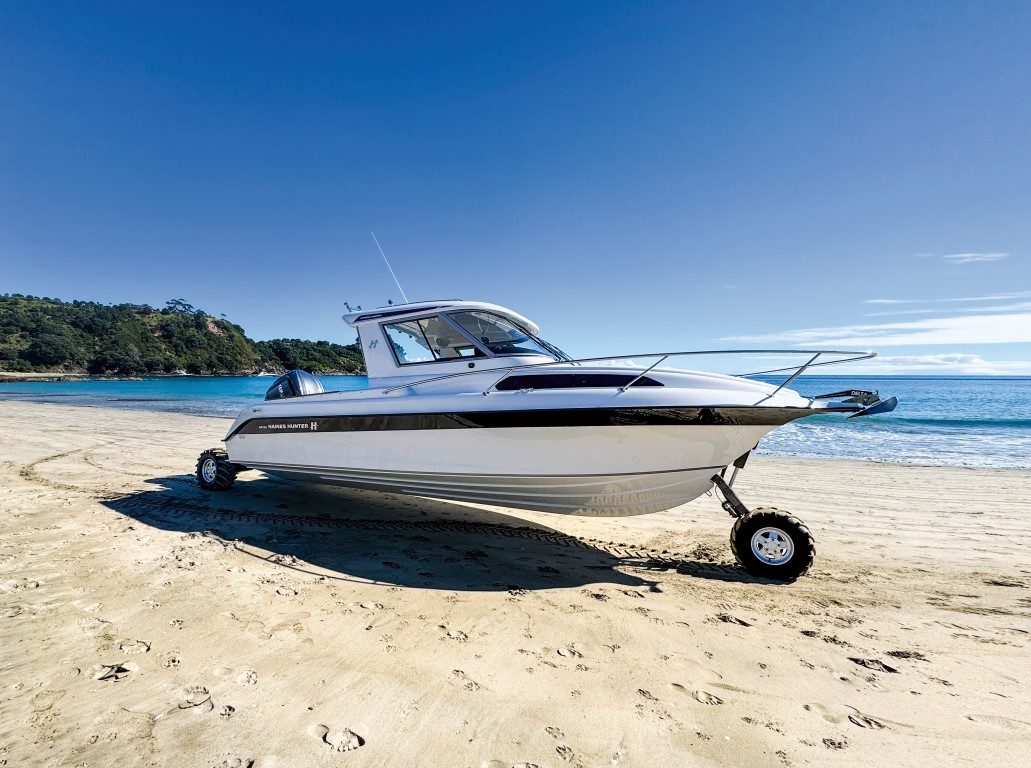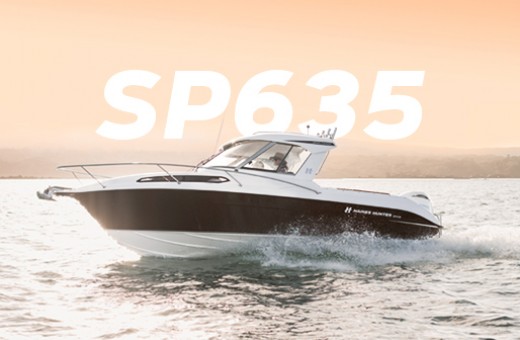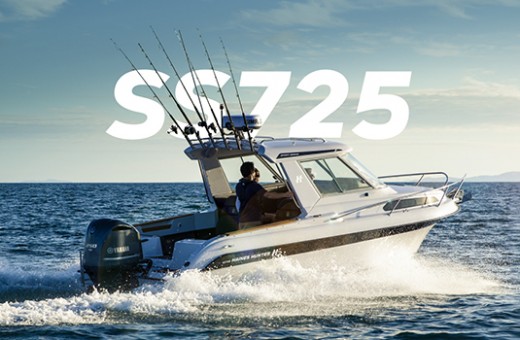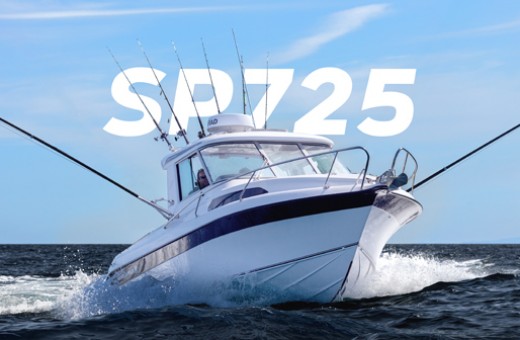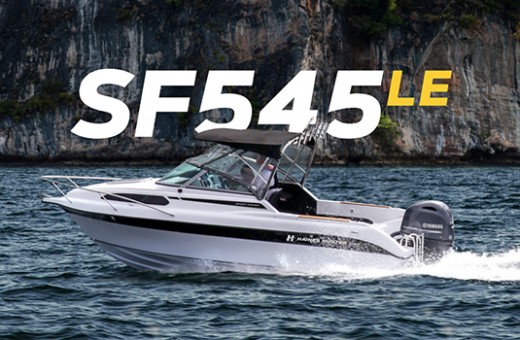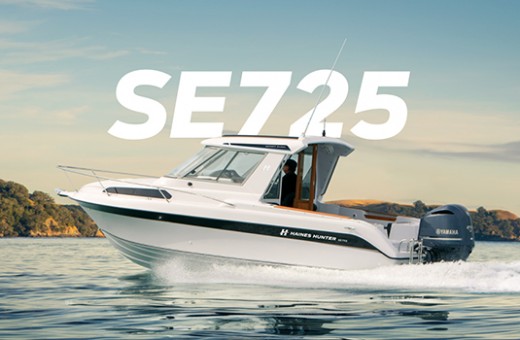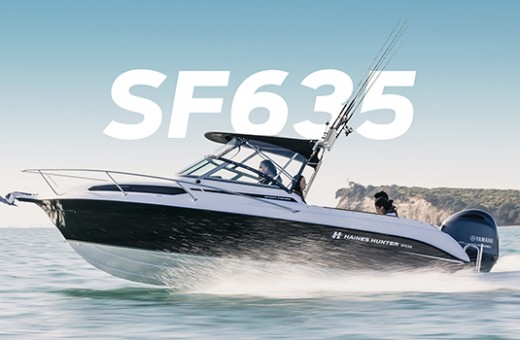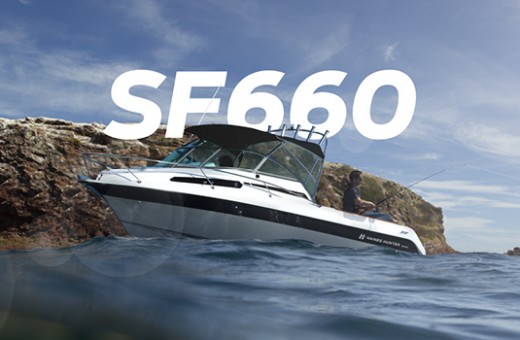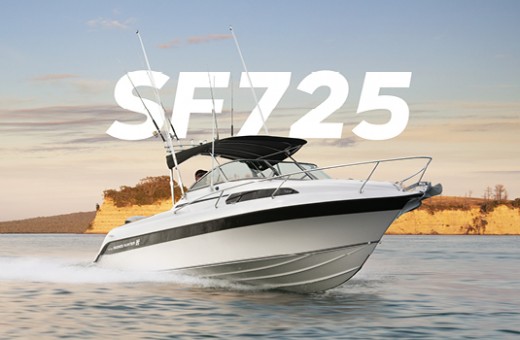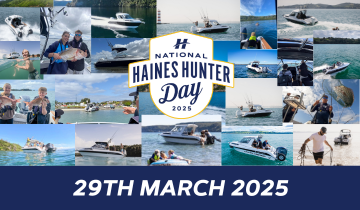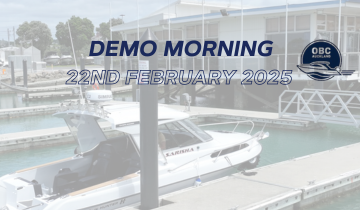The fact an iconic New Zealand boat manufacturer like Haines Hunter has had the courage and vision to embrace amphibious boating adds some serious weight to the whole sector.
With the OP725 Overlander, Haines Hunter has elevated wheelie boats to a whole new level by combining its premium Sport Pursuit 725 model with Kiwi company Anura’s world-leading S25 electric-over-hydraulic amphibious technology for boats. Based on Haines Hunter’s range-topping 725, specifically the Sports Pursuit (SP) model, and designed to fill a perceived gap in the market, the highly-spec’d Overlander (the ‘OP’ in OP725 stands for Overlander Pursuit) is a high-quality, production amphibious vessel that raises the bar in terms of amphibious utility, performance and style. It combines the sophistication and high-quality fitout of the recently upgraded SP725 with brilliantly executed engineering to seamlessly integrate the Anura system.
Nothing about the Overlander feels grafted on or like an afterthought. Even the hydraulic hoses and electrical cables are hidden inside conduits, while the hydraulic reservoir and electric-over-hydraulic pumps and motor are housed between the rear seats under a specially moulded cover. Indeed, aside from a discreet joystick and a modest display on the helm console, plus a control module under the Yamaha throttle control, from inside the boat there’s almost nothing to indicate it’s anything other than another SP725 – until you spot the wheel assemblies hanging off the transom (the front wheel is invisible from the helm).

But turning the 725 into an amphibious vessel wasn’t as easy as fixing some wheels to the corners, explained Haines Hunter’s Denis Kendall, the main driver behind the Overlander project. First there was the matter of deciding which amphibious system to use, a decision, says Denis, made easier by his familiarity with hydraulic systems through his background in competitive yachting. Anura’s innovative, modular electric-over-hydraulic propulsion system was the most attractive. “I liked its compactness, high-quality engineering, and relative simplicity compared to some other systems. I was also very impressed with the support we received from the Anura team, and continue to receive,” says Denis. “From the outset, the Overlander was a collaboration between our companies.”
Preparing the flagship 725 for amphibious duty involved a certain amount of strengthening, especially to the transom, to which the rear wheel assemblies are glued – no mechanical fixings – and the bow which has a new bow mould insert incorporating carbon-fibre for strength to accommodate the front wheel assembly. There was no need to extend the bowsprit, either, to accommodate the anchor since the wheel tucks up snugly under the bow. In addition to the bow and transom, carbon fibre reinforcing is also used along the bottom and on the transom, replacing the usual E-glass to add strength without extra weight.
All up, the Overlander’s dry weight is 2.4 tonnes with Yamaha’s new 4.2-litre V6 350hp outboard bolted to the transom – around 3.4 tonnes loaded and partially fuelled on an optional road trailer.
The OP725 is a premium hardtop model with classy teak and black vinyl trim, comfortable seats, C-Zone digital switching, Simrad MFD, windscreen demisting (diesel heating optional), good storage options and a large, fully lined cockpit. It also boasts a lined cabin with ample seated headroom, generous v-berths (with infill) and overnighting facilities including a separate head, twin-burner LPG cooker (certified, vented gas locker and vented cooker compartment), and under-seat fridge/freezer.

A few very minor compromises had to be made for amphibious conversion: the v-berths are slightly shorter to accommodate the front wheel assembly, under-seat storage on the starboard side is taken up by four 48V 60Ah lithium-ion batteries, the underfloor locker between the front seats is gone (the fuel tank has been shifted forward to compensate for the amphibious system’s extra weight aft), and the transom layout has been modified to accept pumps, oil reservoir and electric motors under the step-through between the rear seats.
The rear seat arrangement will be familiar to anyone who knows Haines Hunters, with simple and practical pull-out seat-base bins and hinged backrests to protect the house batteries, isolation switches and fuel filter. With the seat bases pulled out, there’s good access to the Anura installation and the moulded machinery cover between the seats is also easy to remove.

Haines Hunter’s 725 range is universally acknowledged for its fine performance, handling, and comfort – in all sea conditions. The Overlander lives up to this legacy and adds the ability to drive the boat ashore – even camp ashore overnight, should you so desire. It has everything you need for a comfortable overnight stay, whether at sea or on shore.

Performance, particularly with the 350hp V6, is very impressive, but Haines Hunter can also offer this model with 250hp or 300hp, either of which will provide ample power. With this engine we saw a top speed of 45.2 knots at 6000rpm with three adults and 240 litres of fuel onboard. The Overlander cruised very happily at anywhere between 25 and 35 knots: 4000rpm gave 28.7 knots burning 42 litres per hour, the hull soaking up any bumps and delivering a dry, comfortable ride – no need to stand up when driving a big Haines.

Underway, the extra weight of the wheels at the boat’s ends is hardly noticeable – perhaps a tiny bit more pitching – and Denis reckons the Overlander floats ever so slightly bow down compared to the standard boat at rest. He must be very picky because I can’t see it.
So, the on-water performance and comfort of the OP725’s 21° deep V hull is excellent, but what about the amphibious aspect? How well does the Overlander take to the land?
Very well, as it turns out. The Anura system is not only pleasingly quiet in operation (no noisy internal combustion engine in the cockpit), it’s also easy to operate with great features like one-button auto-up, auto-down wheel lowering and raising, and alarms to indicate the wheels are fully up or down.
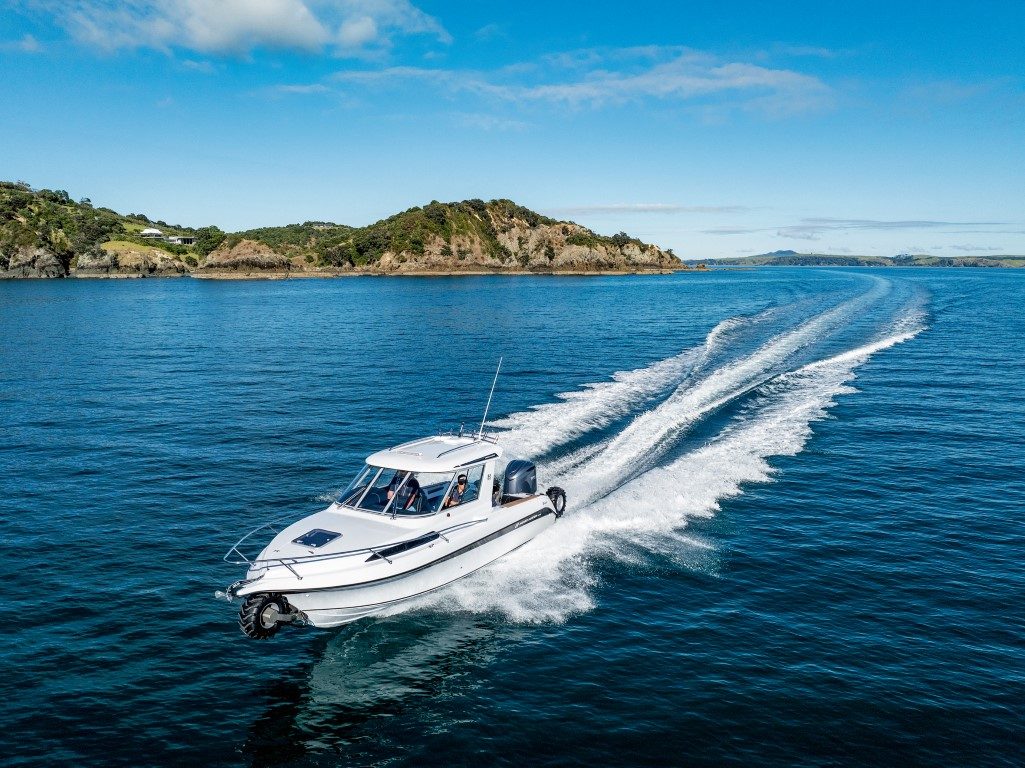
On land, the joystick control regulates the amount of power going to the wheels in forwards and reverse, applied by pushing the joystick forward or back. A rotary dial adjusts the electric motor speed and there’s a compact LED display to present battery health and drive load data in real time. Steering is hydraulic using the steering wheel.
Powering the Anura S25 all-wheel-drive amphibious system is the company’s new Electric Over Hydraulic (EOH) motor. This features a 48V, 28kW electric motor supplied by a 12.4kWh battery pack. The hydraulic motors produce a maximum drive torque of 3500Nm and turns the wheels via a system of hydraulic pumps, hoses and fittings.
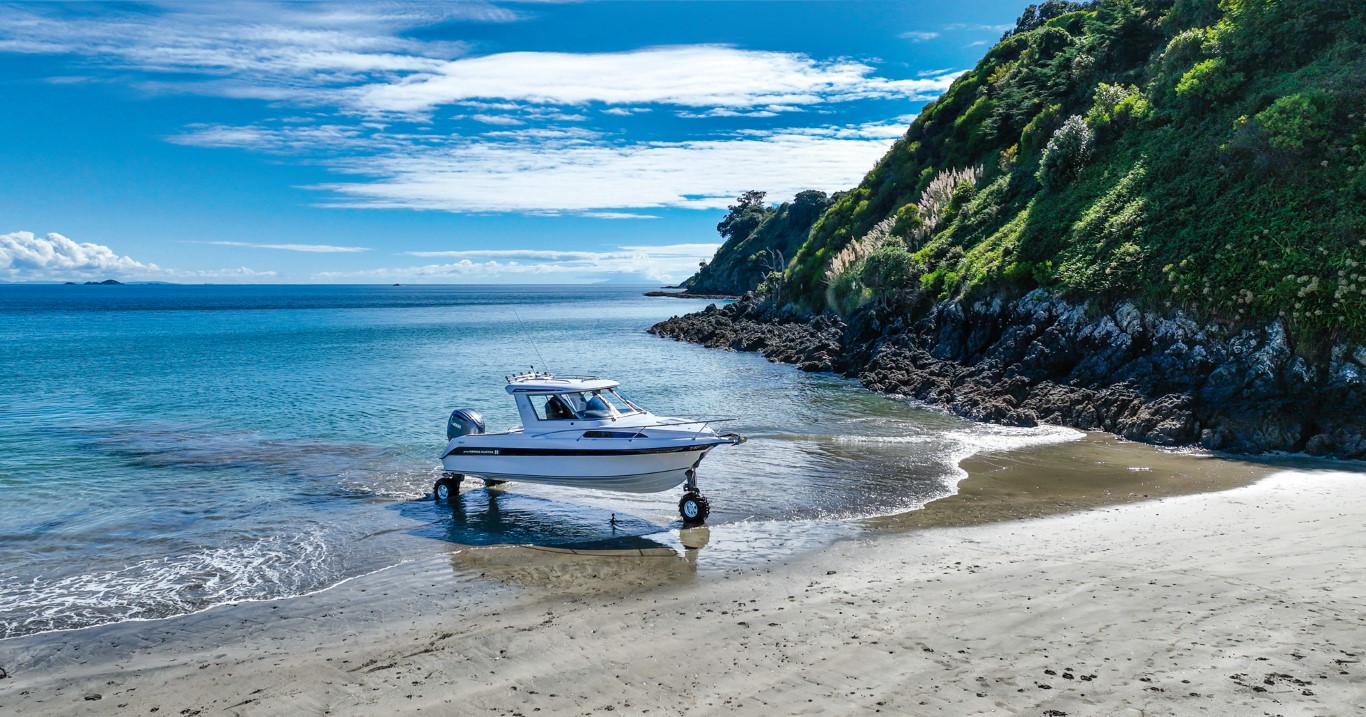
This gives the Overlander the ability to travel at up to 9kph on land, and with all three wheels driven, the Overlander can negotiate a variety of beach types, though – as Denis points out – it’s not an all-terrain vehicle.
It’s certainly the sort of vessel to turn heads – on the beach and on the water. The Overlander attracted interested beachgoers at Waiheke Island’s Palm Beach – Waiheke is New Zealand’s amphibious boat capital – as well as a few close inspections and even a stop and chat from an interested amphibious boater out on the water during our review.
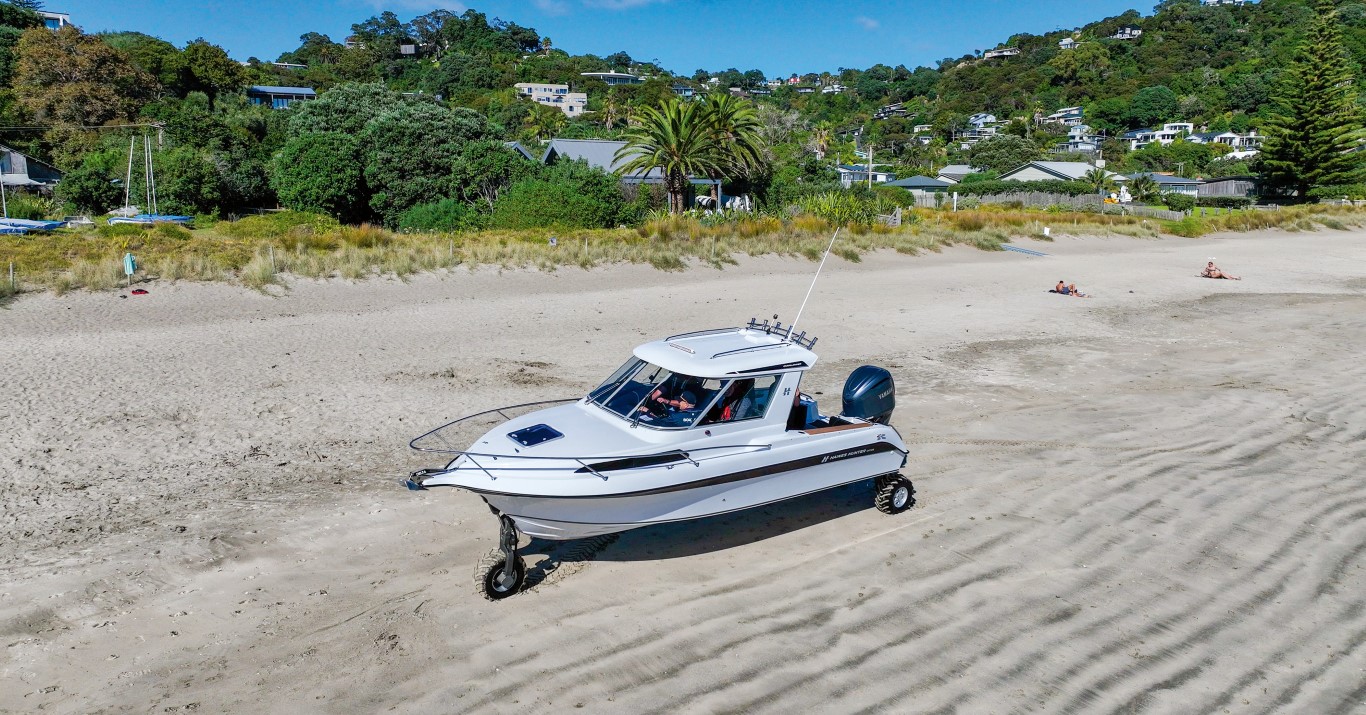
Their comments and reactions were overwhelmingly positive, especially around the boat’s comfort, weather protection and general quality. Haines Hunter is targeting a premium niche within amphibious boating and judging by these reactions the company could be on to a winner with the Overlander. With the SP/SE/SF 725, Haines Hunter started with a very good boat. The new Haines Hunter Overlander OP725 then adds amphibious capability to a great formula, which arguably makes it even better – more desirable still. The OP725 Overlander certainly stand outs from the amphibious crowd – in a good way.
